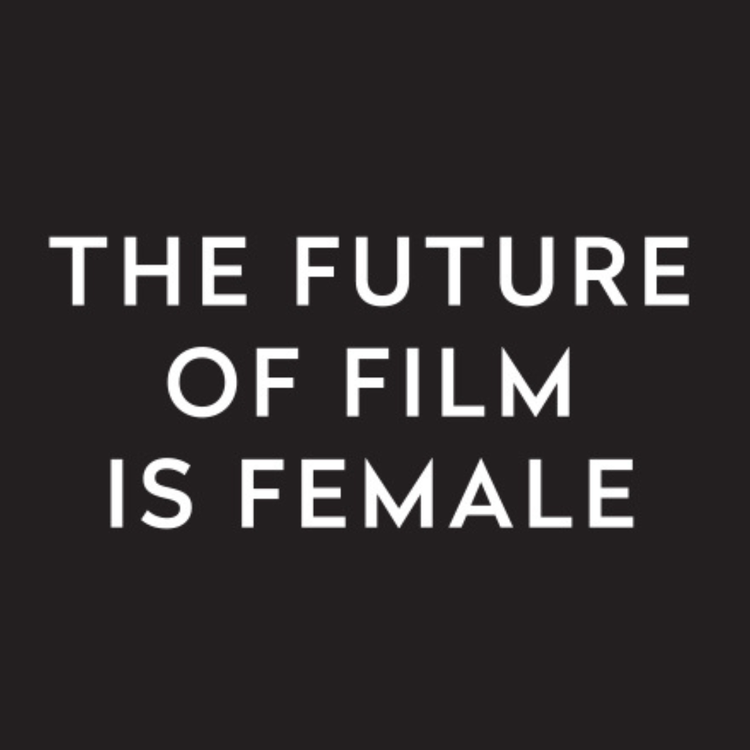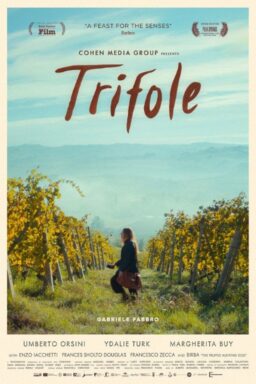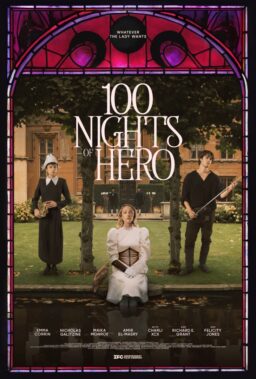This series presents a different essay by a different writer on the first Friday of every month. Each one starts from the premise “The Future of the Movies.” The writer is free to expound on that title in whatever way they choose. It could be streaming, theatrical, AI, tech, representation, or anything else that comes to mind. And we expect the conversation to change month to month. We just want to make sure we’re having it. Come back every month for upcoming essays by Robert Daniels, Brian Tallerico, Clint Worthington, Isaac Feldberg, and many more.
When I was first asked to write about “The Future of the Movies,” I immediately thought about the phrase “The Future of Film is Female,” and the excellent organization founded by Caryn Coleman whose mission is to amplify the work of women and non-binary filmmakers during every stage of their career. Anyone who is familiar with my column, Female Filmmakers In Focus, knows that the main focus of my own career has been aligned with that same mission. But what I truly believe is that it’s not just the future of film that is rooted in the work of women and non-binary filmmakers; it’s the past and the present as well.
In January alone we saw the very first line-up of best picture nominees at the Academy Awards that included three films directed by women: “Past Lives” directed by Celine Song, “Anatomy of a Fall” directed by Justine Triet, and “Barbie” directed by Greta Gerwig. And, as it has been for years now, the lineup could very much have been made up of ten films all directed by women, with such artist triumphs like Raven Jackson’s “All Dirt Roads Taste of Salt,” Ava DuVernay’s “Origin,” A.V. Rockwell’s “A Thousand and One,” Sofia Coppola’s “Priscilla,” Lila Avilés’s “Tótem,” Maryam Touzani’s “The Blue Caftan,” and D. Smith’s “Kokomo City” all coming up empty handed.
As the month closed out, writer-director Alessandra Lacorazza’s “In The Summers” won the U.S. Dramatic Grand Jury Prize at the Sundance Film Festival, making it the fourth year in a row a film directed by a woman or non-binary filmmaker has received the honor. Films like Angela Patton and Natalie Rae’s “Daughters” and Shuchi Talati’s “Girls Will Be Girls” won the festival’s audience awards. Films with uncompromising visions like Jane Schoenbrun’s “I Saw The TV Glow” and Haley Elizabeth Anderson’s “Tendaberry” premiered to rave reviews.
Along with these strides in contemporary filmmaking, there has been an explosion of archival work in the last few years that has helped resurrect filmmakers and films that had been pushed so far into the margins they almost disappeared. The organization Missing Movies has brought films like Nancy Savoca’s “Household Saints” and Mira Nair’s “Mississippi Masala” back from the dead in beautiful restorations that have not only played festivals, but have made the films accessible for home viewing again. Similarly, Janus Films revived Cauleen Smith’s DIY marvel “Drylongso” and the Kino Lorber and Milestone Films release of Ayoka Chenzira’s “Alma’s Rainbow” was the film’s widest release since it first premiered in 1994. Both releases also included short films by Smith and Chenzira, granting viewers the opportunity to dive even deeper into the work of these singular filmmakers.
This year even more archival wonders are making the rounds at film festivals. Maya Cade of the Black Film Archive along with Milestone Films recovered and restored Bridgett M. Davis’s “Naked Acts,” which just had the world premiere of its 4K restoration at International Film Festival Rotterdam. While restorations of “Leila and the Wolves,” Heiny Srour’s portrait of Palestinian and Lebanese liberation and “Not A Pretty Picture,” Martha Coolidge’s deeply personal exploration of rape culture through the lens of her own assault, offer a wider lens on the world of 1970s feminist filmmaking.
Going even further back, boutique labels like AGFA have released three different Blu-ray sets featuring the films of prolific exploitation filmmaker Doris Wishman, whose idiosyncratic, surreal, and inimitable films ask us to reconsider the image we have of the American independent film movement of the 1960s and 1970s. Kino Lorber’s “Cinema’s First Nasty Women” and “Pioneers: First Women Filmmakers” collections ask us to reconsider what we know about women filmmakers within the landscape of global cinema in the silent era.
Along with the festival runs, theatrical presentations at art houses theaters across the nation, and home video releases, the careful curation on streaming services like Criterion Channel, MUBI, and Kanopy have thankfully made these filmmakers and their films accessible to audiences who don’t have the luxury of a video store nearby (shout out to the handful video stores still doing their thing!). There are so many possibilities available for lovers of the medium to find a new favorite, to feel seen, to be challenged, to fall in love with the art of film for the first time or all over again.
With the precarious nature of film media today, it’s never been more clear to me that the future of the movies is going to rely on those outlets that remain, and their dedication to amplifying the contemporary voices that are pushing the medium forward, but also to continually reevaluate the medium’s past through amplifying the work of archivists, preservationists, and historians who are resurrecting and presenting the marginalized voices whose work continues to echo today. This is how we can keep the art vital and alive to be enjoyed by future audiences and the filmmakers who have yet to come.












